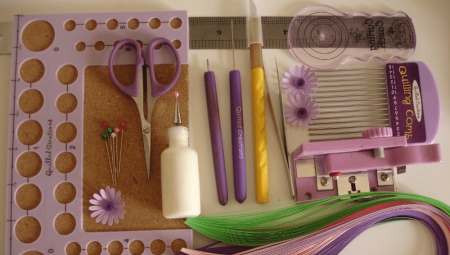The secret of quilling is a special technology of paper rolling, whereby beautiful voluminous work is obtained. Handicraft lovers know how important it is to have a set of tools and high-quality consumables next to you, so that you get something special. Today there are different types of devices for practicing quilling, each of which has its own function. A few rules will help you quickly pick up hobby tools.
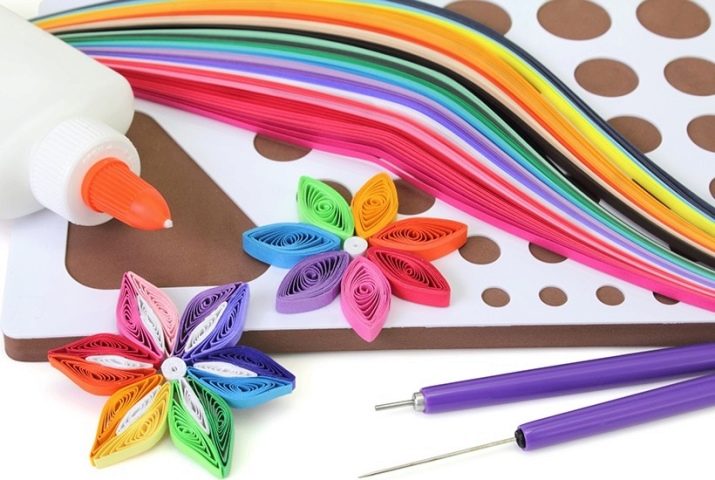
Core tools
To do quilling, first you need to prepare equipment. The market offers many different devices for paper rolling, so you should study their differences and purpose. Knowing the functions of each instrument, you can create real masterpieces from such simple material and enjoy the process.
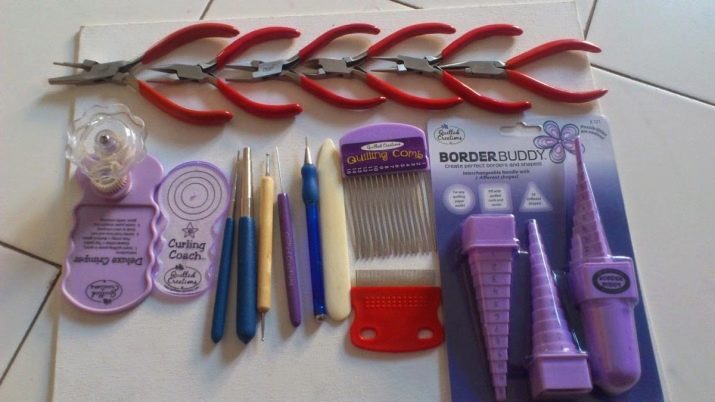
Needles are used for twisting.on which paper is fixed. It is important to do this without jams, avoiding kinks.
If there is no needle at hand, you can take a simple toothpick, it will allow you to get the desired effect.
As for professional fixtures, you can purchase an awl, which is presented in the form of a thin metal pin. It has a plastic or wooden handle that is comfortable to hold on to.
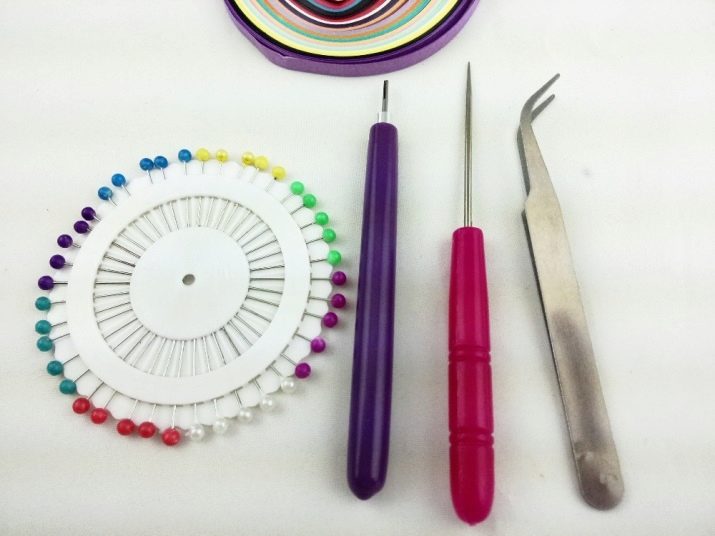
Some of these tools have a connector on the tip where you want to insert the edge of the paper. The slot can be of different depths, so you should consider how wide the paper strips will be.
Conveniently wrap consumables on a tool that has a ball on its tip, so you need to choose based on personal preferences.
The basis of quilling is the formation of paper blanks of different sizes.They can be made from ordinary sheets that are sold in every office supply store. but paper weight should be taken into account, as this will affect the quality of wrapping.
Glue is a fastening element, which can not be dispensed with. It connects individual rolls. For this, even ordinary PVA glue is suitable, it has sufficient strength.
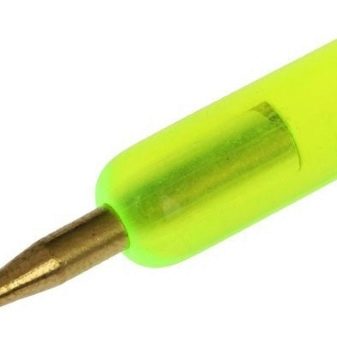
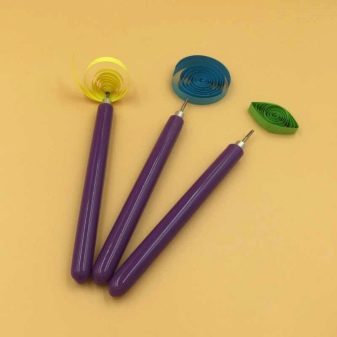
Many professionals in the field of quilling prefer a glue gun, but if you are a beginner, then first you need to practice using the device. Elements are quite fragile and often small, so holding them with your fingers without damaging their integrity is difficult. It is necessary to prepare tweezers, which is convenient to take parts, apply glue to them and stick to the rest of the common craft.
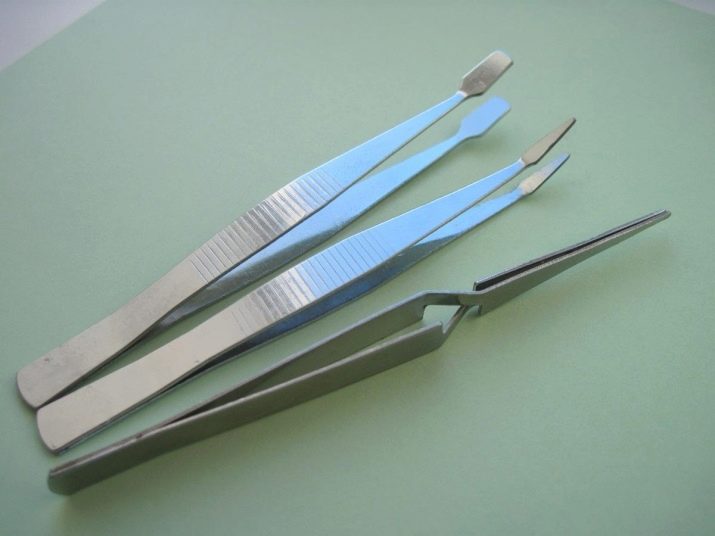
It is important to observe the same dimensions of the elements so that everything looks harmonious. therefore the ruler should also be among the wizard tools used. Previously, you can prepare templates from durable cardboard for the further formation of paper stripes.
An ordinary stationery knife is used for cuttingin which you can change the blade, which is practical and economical.
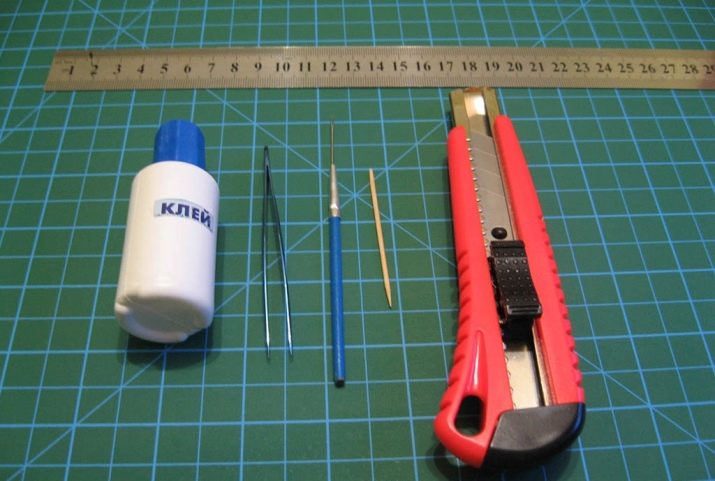
Assistive devices
Professional quilling tools are available at every craft store. And if you want to do this seriously, you will need to stock up on supplies and accessories, so that the process will go much faster, and the result will be neat and without defects.
In quilling technique, the main thing is a tool with a sharp end. This unit is needed to bend the ends of the paper strips to form spirals. Such products are offered on the market in the form of an awl or quilling machine. The first one is cheaper, and besides, they can learn needlework very quickly.
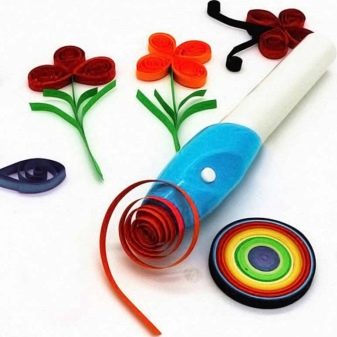
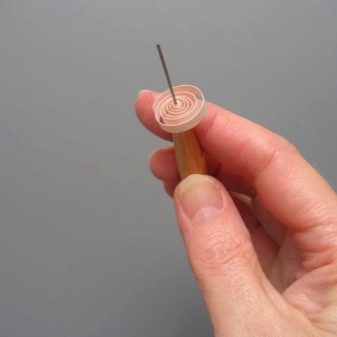
The tweezers should not have wide tips, but sharp so that the material does not crumple. This device is required for the gluing process, besides, it is inconvenient to hold the strips with your hands, because these are miniature parts. For tweezers that are designed for quilling, the end can be either flat or curved. It will be useful to stock up on these two types of tools.
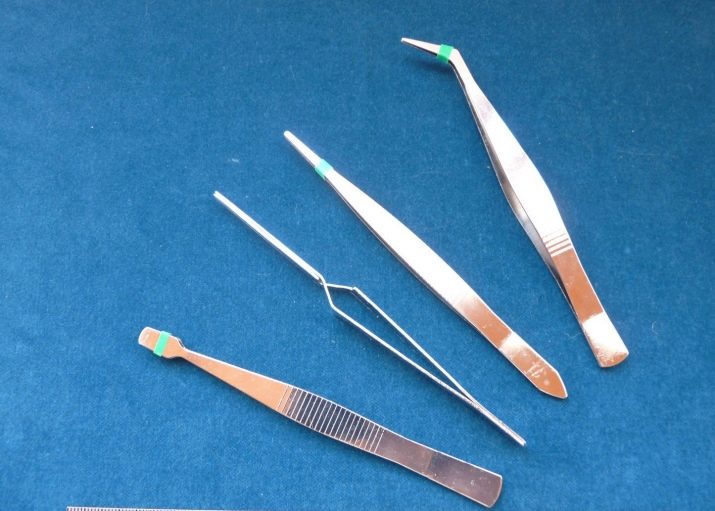
Rulers will need two sizes: one compact, and the second - up to 40 cm. It is designed to measure paper stripes so that everything is the same.
Quilling specialists often use a protractor, with its help you can get perfectly even workpieces and create original patterns.
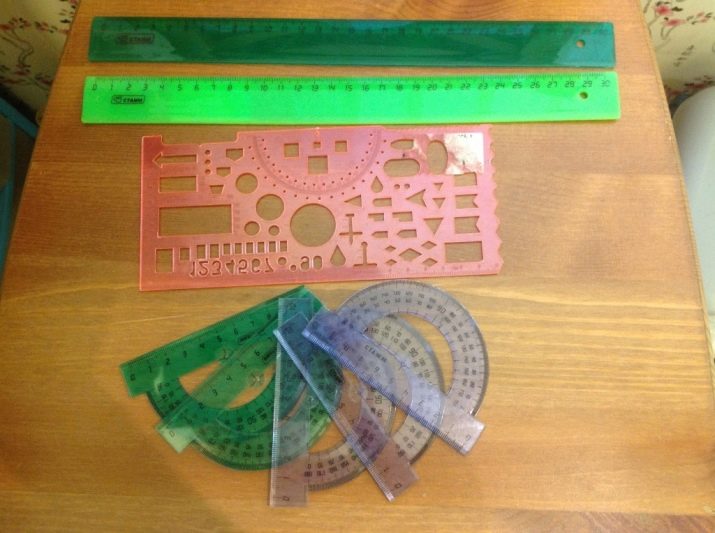
Of course, scissors are indispensable., the main thing is that they are quite sharp. But here, one such tool will not be enough - manicure with a sharp tip should be at hand, they are easier to work with small elements.
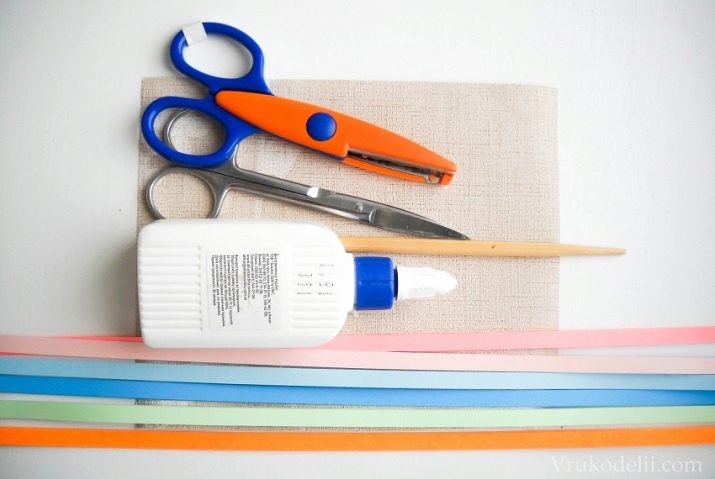
The accuracy of any composition directly depends on the availability of tools that the master has. And in order to achieve an amazing result, to achieve perfection, for a start it is necessary to stock up on devices, determine the consumption of materials and not miss anything.
How to choose?
Choosing a set of paper for quilling is not so simple, because in a stationery store offers a wide range of this material. First you need to decide which strips should be: regular or corrugated. Also important is the color of the paper, its density and other important characteristics. If you are going to create postcards, the usual sheets are suitable, which are easy to find in any shopping center. But for the manufacture of three-dimensional figures, it is better to choose thick paper with an indicator of 100 g / cm². The width of the strips depends on what result should be obtained.
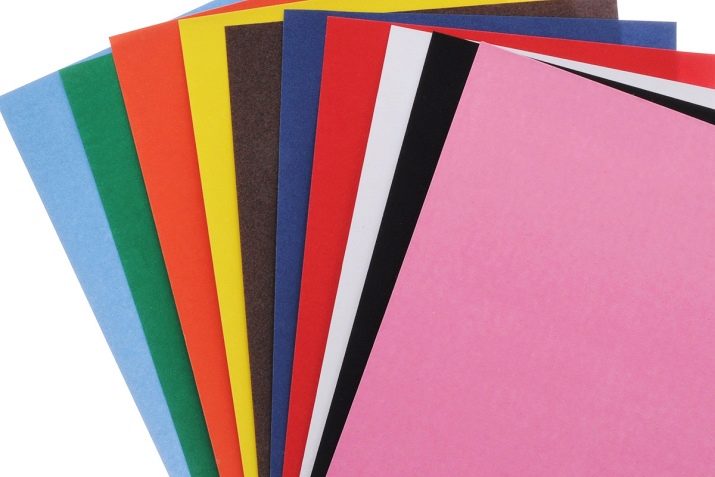
Quilling blanks are often sold ready-made, that is, a cut form - just select the options and colors. This has its advantages, since often the strips are much longer than ordinary sheets, they are dense and are offered in a variety of shades. The color on the cut line is the same, so the final picture will look bright.
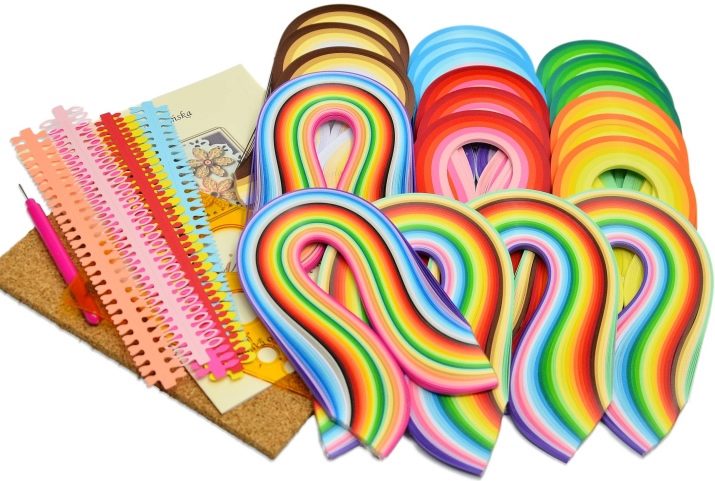
How to do it yourself?
There are some simple tips to follow. You can make a quilling handle yourself. To do this, you can take the body of helium pens, a glue gun, pliers and ordinary needles. The eye of the needle must be “bitten off”, then inserted into the lower part of the cap, pour hot glue and quickly twist until the substance has cooled. Such a quilling tool will be practical and convenient during needlework, which many craftsmen will agree with.
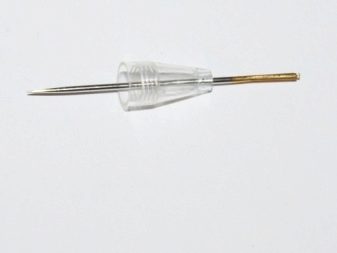
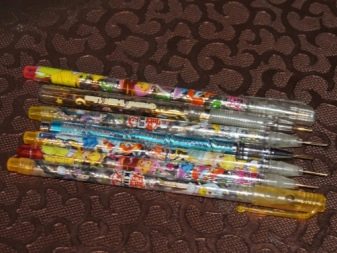
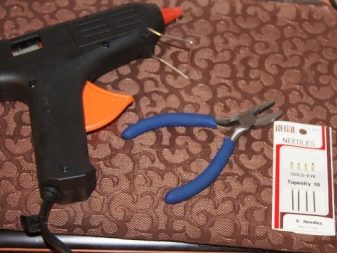
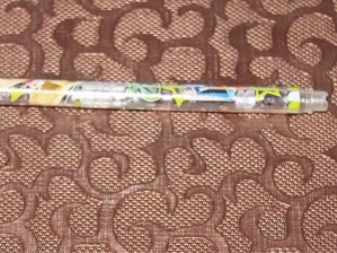
If you decide to make the blank yourself, you will need to do the same layout for the sheet, then cut it into strips. Since wrapping is considered the basis of quilling, you need to master this simple technique. The ribbon is wound around an awl or fixture that you made yourself. Then the next one is carefully glued to the strip, and the process is repeated until the size is as required by the sketch.
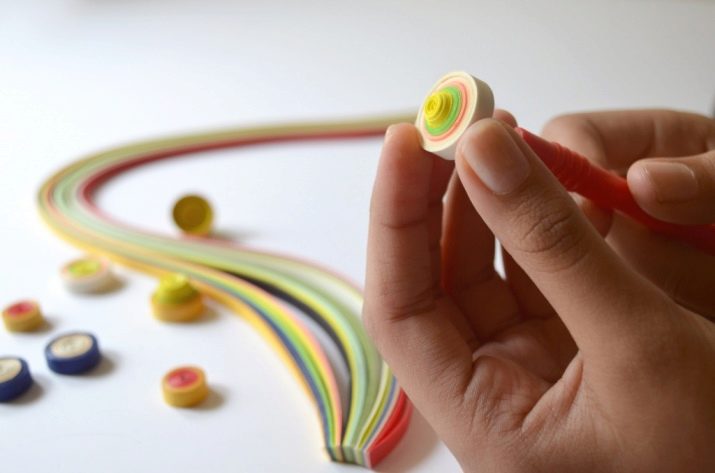
From such paper rolls it is possible to create triangles, spirals, make ovals, tear shape, arrow, etc. Of course, this work requires painstaking and patience, but the result will be amazing. Separate parts are connected with a pin, after which a glue gun or ordinary PVA comes into play.
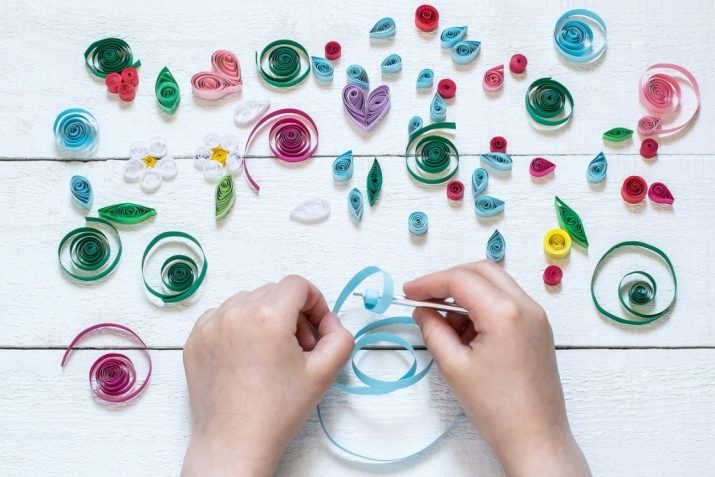
Thanks to quilling, you can make a wonderful craft, arrange the cover of a book, create a postcard or decorate the wall in the room. As you can see, the consumption of materials is small, the set of tools is minimal, and skills can be obtained in a short time - it all depends on training and patience.
You can start with small cards and gradually move on to creating a picture that will fit into any interior.
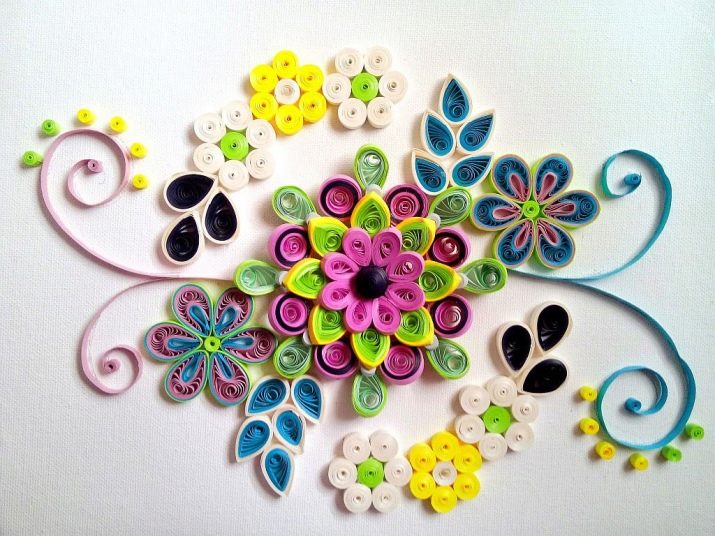
Quilling for beginners - in the next video.
